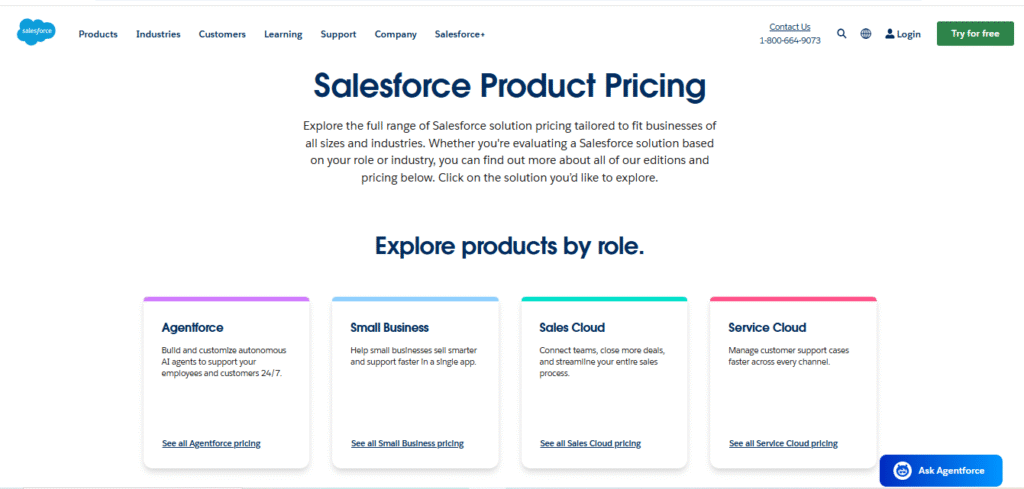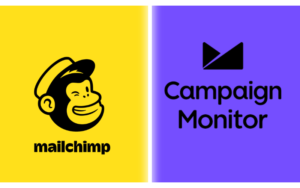Choosing the right platform for customer service and CRM often leads businesses to compare Zendesk vs Salesforce. Both are powerful tools, but they cater to different needs and business sizes. In this post, we’ll break down the key features, pricing, performance, and more to help you decide which platform is the best fit for your organization. Whether you’re a small business looking for an easy-to-use support tool or a large enterprise in need of a comprehensive CRM, we’ve got you covered.
Ease of Use
When it comes to ease of use, Zendesk vs Salesforce offers two very different user experiences. Zendesk is widely known for its clean, intuitive interface and quick setup process. It’s designed primarily for customer support teams, so users can get up and running with minimal training. The dashboard is simple, and most features are easy to access even for beginners.
Salesforce, on the other hand, is a powerful and highly customizable CRM platform. But that power comes with complexity. New users often face a steep learning curve due to the vast number of features and configuration options. While Salesforce offers extensive documentation and training through its Trailhead platform, it typically requires more time and technical know-how to master.
If you need a tool that’s easy to use out of the box, Zendesk is likely the better option. However, if you’re looking for advanced functionality and don’t mind investing time into training, Salesforce can be worth the effort.
Features and Functionality
When comparing Zendesk vs Salesforce in terms of features and functionality, it’s clear that each platform is built with different strengths. Zendesk is designed primarily for customer support, while Salesforce is a full-scale CRM system that covers sales, marketing, and service.
Zendesk offers a comprehensive set of tools focused on improving support operations. Users can manage customer tickets efficiently, automate workflows, and handle multiple communication channels such as email, chat, phone, and social media. It also includes built-in AI bots for faster response times, along with options to create a knowledge base and offer self-service support. Features like SLA management and customer satisfaction surveys help teams monitor performance and maintain quality service.
Salesforce, in contrast, provides a much broader range of features that go beyond customer support. It includes robust contact and lead management tools, sales pipeline tracking, and forecasting capabilities. Salesforce also integrates marketing automation through its Marketing Cloud and offers advanced reporting tools for deep analytics. While its Service Cloud adds support features similar to Zendesk, Salesforce is ultimately designed to give businesses a complete view of the customer journey, making it more suitable for cross-departmental collaboration.
In summary, Zendesk is an excellent choice for businesses looking for a streamlined, support-focused solution. Salesforce is better suited for organizations that require a powerful, all-in-one platform to manage sales, marketing, and customer service.
Customization and Scalability
When evaluating Zendesk vs Salesforce in terms of customization and scalability, Salesforce clearly stands out as the more flexible and scalable option—especially for growing or enterprise-level businesses. However, Zendesk also offers a strong level of customization for support-specific workflows.
Zendesk allows users to tailor ticket fields, workflows, macros, and automations to suit their support process. It supports multiple brands, custom help centers, and conditional logic to streamline how tickets are handled. While it’s not as deeply customizable as Salesforce, it provides more than enough flexibility for most customer service teams. Zendesk also scales well for businesses of various sizes, making it a great fit for small to mid-sized teams that expect growth.
Salesforce, on the other hand, is built for maximum customization. Users can create custom objects, workflows, dashboards, and even entire applications using its Lightning Platform. It supports complex automation rules, third-party integrations, and advanced reporting. This level of customization is ideal for businesses with unique processes, multiple departments, or evolving operational needs. Salesforce is also highly scalable, with solutions designed to support startups, mid-market companies, and global enterprises.
In short, Zendesk is easier to customize within the scope of customer support, while Salesforce offers enterprise-grade flexibility across multiple business functions. Choosing between Zendesk vs Salesforce depends on whether you need deep, technical customization across your entire organization or a focused, efficient setup for your support team.
Integration Capabilities
When it comes to integration capabilities, both Zendesk vs Salesforce offer strong options, but they serve different business needs depending on complexity and scale.
Zendesk integrates seamlessly with over 1,000 apps through its Zendesk Marketplace. These include popular tools like Slack, Shopify, Trello, Google Workspace, and Zoom. Integration setup is generally simple and doesn’t require deep technical skills. For support teams, this makes it easy to connect Zendesk with the tools they already use. Additionally, Zendesk offers API access for custom integrations, giving developers the flexibility to connect more specialized systems if needed.

Salesforce takes integrations to another level with its vast AppExchange marketplace and powerful APIs. It supports thousands of third-party apps across sales, service, marketing, and analytics. Beyond standard app integrations, Salesforce offers robust tools like MuleSoft and Salesforce Flow for creating complex workflows and connecting data across platforms. This makes it ideal for larger organizations that need deep system integration across departments.

In summary, Zendesk is ideal for teams that want easy plug-and-play integrations focused on support tools. Salesforce is better suited for businesses that require advanced, customizable integrations across multiple departments and enterprise systems.
Pricing and Plans
Pricing is a major factor when comparing Zendesk vs Salesforce, especially for businesses trying to balance features with budget. Both platforms offer multiple pricing tiers, but their structures and focus areas are quite different.
Zendesk offers straightforward pricing for its customer service solutions. Plans typically range from affordable options for small teams to more advanced tiers for larger organizations. Its basic plan starts at a lower price point, making it accessible for startups and small businesses. Higher-tier plans add advanced features like AI-powered bots, analytics, and multi-brand support. Zendesk also offers a separate pricing structure for its sales CRM (Zendesk Sell), which may require an additional subscription if you need both support and sales tools.

Salesforce, on the other hand, is more expensive and complex in its pricing. Its core CRM product—Sales Cloud—starts at a higher price compared to Zendesk’s entry-level plans. As you move up the tiers, costs can increase significantly, especially when you add products like Service Cloud, Marketing Cloud, or advanced automation features. Salesforce pricing is highly modular, which means you often pay separately for different capabilities. While this allows for flexibility, it can also make budgeting more complicated.

In short, Zendesk is more cost-effective for businesses focused primarily on customer support. Salesforce is a better long-term investment for companies that need a comprehensive CRM solution and are prepared to pay more for advanced functionality and customization.
Customer Support and Onboarding
When comparing Zendesk vs Salesforce in terms of customer support and onboarding, both platforms offer strong resources, but the experience differs in scope and focus.
Zendesk is known for its user-friendly customer support experience. Their onboarding process is straightforward, with guided setup tutorials and helpful resources to get your support team started quickly. Zendesk offers 24/7 support through multiple channels, including live chat, email, and phone. Additionally, they provide a comprehensive knowledge base and community forums where users can find solutions to common issues or get tips on best practices. Zendesk also offers live webinars and extensive documentation to ensure that teams can master the platform.
Salesforce, while offering excellent support, is more geared toward larger organizations with complex needs. The onboarding process can be more time-consuming, especially for businesses adopting the full Salesforce suite. Salesforce provides robust training through its Trailhead platform, which offers self-paced courses to help users understand both the basics and advanced features. Support is available 24/7 through chat, phone, and email, but the complexity of the platform often means that users may need more time to fully learn and configure Salesforce. Additionally, Salesforce offers consulting services for businesses that require more personalized assistance.
In short, Zendesk vs Salesforce for customer support and onboarding comes down to the size and needs of your organization. Zendesk provides a quicker and easier setup for small to mid-sized support teams, while Salesforce offers more in-depth training and support for larger organizations that need advanced customization and functionality.
Performance and Reliability
When it comes to performance and reliability, both Zendesk vs Salesforce are known for their high standards, but each platform has its own strengths and considerations based on the scale of the business and its needs.
Zendesk is widely praised for its fast response times and uptime reliability. It is designed to handle a large volume of customer support tickets efficiently, even during peak times. Zendesk’s infrastructure is robust, with data centers around the world ensuring low latency and high availability. The platform boasts an uptime of 99.9%, which is crucial for support teams that rely on the tool for real-time communication. However, as Zendesk is primarily a customer support tool, the platform is not as feature-dense as Salesforce, which may influence its overall performance in larger, more complex business environments.
Salesforce, being a more comprehensive CRM platform, is built to handle high volumes of data across multiple departments, including sales, marketing, and customer service. The platform’s performance is generally strong, but due to its complexity and the vast number of features, some users have reported slower load times when using advanced tools or highly customized workflows. However, Salesforce’s scalability makes it ideal for large enterprises with complex needs. Salesforce also offers excellent reliability with an uptime similar to Zendesk, ensuring consistent service for mission-critical business operations.
In summary, Zendesk vs Salesforce in terms of performance and reliability comes down to the complexity of your business needs. Zendesk provides fast and reliable service for support-focused teams, while Salesforce is better suited for organizations with complex workflows that require a high-performing, scalable CRM solution.
Mobile Accessibility
When comparing Zendesk vs Salesforce in terms of mobile accessibility, both platforms offer mobile apps, but their capabilities and user experiences vary significantly.
Zendesk provides a dedicated mobile app for both Android and iOS, designed with customer support agents in mind. The app allows agents to manage tickets, respond to customer inquiries, and view key customer information on the go. It’s a lightweight, easy-to-use app that provides most of the core features available on the desktop version. The mobile interface is intuitive, making it simple for agents to stay on top of support tasks while away from their desks. However, certain advanced features, such as deep analytics and full customization options, may be limited or harder to access via the mobile app.
Salesforce also offers a mobile app for iOS and Android, but with a much broader focus. As a full CRM platform, the Salesforce mobile app enables users to access not just support data, but sales, marketing, and customer insights as well. It provides mobile access to customer records, sales pipelines, reports, and dashboards. The app is highly customizable, allowing businesses to tailor it to their specific needs. While the Salesforce mobile app provides a lot of flexibility and functionality, its complexity can make it more difficult for users to navigate, especially those who are unfamiliar with the full Salesforce platform.
In summary, Zendesk vs Salesforce for mobile accessibility comes down to the level of complexity your business requires. Zendesk offers a simpler, more straightforward mobile app focused on customer support, while Salesforce provides a more feature-rich app that caters to a wide range of business functions.
Pros and Cons
When comparing Zendesk vs Salesforce, it’s important to understand the strengths and limitations of each platform to determine which one best suits your business needs. Both have distinct advantages and potential drawbacks depending on your focus, team size, and long-term goals.
Zendesk Pros:
- User-Friendly Interface: Zendesk is known for its clean, intuitive design, making it easy to use for customer support teams. Setting up and managing the platform is quick, even for businesses with minimal technical expertise.
- Cost-Effective: Compared to Salesforce, Zendesk offers more affordable pricing, particularly for small and mid-sized businesses that primarily need support tools.
- Fast Implementation: With its simple setup process, Zendesk allows support teams to get started quickly without extensive training or setup time.
- Strong Customer Support Features: Zendesk is packed with essential support features such as ticket management, automation, and multi-channel support, making it an excellent choice for businesses focused on customer service.
Zendesk Cons:
- Limited CRM Features: While Zendesk excels at customer support, it lacks the full CRM functionality that Salesforce provides, making it less suitable for businesses that need comprehensive sales and marketing tools.
- Customization Limitations: While Zendesk allows for some customization, it doesn’t offer the same level of deep customization as Salesforce, especially for businesses with complex workflows or multiple departments.
Salesforce Pros:
- Comprehensive CRM Solution: Salesforce is a powerful all-in-one platform, offering not just customer service tools but also sales, marketing, and analytics capabilities. This makes it ideal for larger businesses with diverse needs.
- Highly Customizable: Salesforce allows for deep customization across various business functions, from custom fields to advanced automation. It can be tailored to meet complex business requirements.
- Scalability: Salesforce is designed to scale with your business, making it a great option for growing organizations and large enterprises.
- Extensive Integration Options: Salesforce supports a wide range of third-party integrations, allowing businesses to connect various tools and systems seamlessly.
Salesforce Cons:
- Complexity: Due to its extensive features and customization options, Salesforce can be overwhelming for new users. The learning curve is steeper compared to Zendesk, and full adoption may require additional training.
- Higher Cost: Salesforce tends to be more expensive, especially when you factor in the additional modules and customization options. Small businesses may find it challenging to justify the higher price point.
In conclusion, Zendesk vs Salesforce comes down to the specific needs of your business. Zendesk is ideal for companies focused on customer support, offering simplicity and ease of use at a more affordable price. Salesforce, on the other hand, is better suited for businesses looking for a comprehensive CRM solution with robust customization and scalability options.
Conclusion
In the battle of Zendesk vs Salesforce, the choice ultimately depends on your business’s specific needs, size, and growth trajectory. If you’re looking for a simple, cost-effective solution to manage customer support with a user-friendly interface, Zendesk is a great choice. It offers powerful support features, fast implementation, and affordable pricing, making it ideal for small to medium-sized businesses focused on delivering excellent customer service.
On the other hand, if you need a robust, all-in-one CRM solution that can handle not just customer support but also sales, marketing, and analytics, Salesforce is the better option. While it comes with a higher price tag and a steeper learning curve, Salesforce’s extensive customization capabilities, scalability, and deep integration options make it well-suited for large enterprises or businesses with complex needs.
Ultimately, both platforms excel in different areas, so your decision should be based on your organization’s requirements. Whether you choose Zendesk or Salesforce, each will empower your team to improve customer relationships and drive business success.



